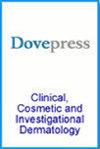皮肤微生物群与银屑病的因果关系:孟德尔随机研究
IF 1.9
4区 医学
Q3 DERMATOLOGY
引用次数: 0
摘要
目的:流行病学调查表明,皮肤微生物群失衡与银屑病之间存在关联,但这种因果关系尚未通过孟德尔随机化(MR)得到证实。孟德尔随机化利用遗传工具变量(IVs)来评估皮肤微生物群与银屑病之间的因果关系,为潜在的治疗方法提供新的见解:方法:银屑病及相关性状的汇总统计数据可从 FinnGen R10 和英国生物库(UKB)联盟获得。关于三种皮肤微环境中皮肤微生物群的全基因组关联研究(GWAS)来自两个基于人群的德国队列。为了确定最佳工具变量,研究人员采用了多种选择过程。在不同的假设条件下,进行了五种 MR 方法和不同的敏感性分析方法,以获得稳健性证据:53个细菌属的449个SNPs被用作IV,F统计量介于20.18和42.44之间,表明没有证据表明存在弱工具偏倚。在 IVW 中,Bacteroides 与来自 UKB 的银屑病相关(OR,95% CI:0.914,0.869- 0.961;P < 0.001,PB-H = 0.007)。该分类群还与寻常型银屑病(IVW:OR,95% CI,0.918,0.872- 0.967;P = 0.001,PB-H = 0.054)和银屑病及相关疾病(IVW:OR,95% CI,0.915,0.875- 0.957;P <;0.001,PB-H = 0.008)有关。在幅度和方向上都确定了一致的因果估计值,表明乳酸菌具有保护作用:关键词:皮肤微生物群 银屑病 孟德尔随机化 乳杆菌属 自身免疫性疾病 AD本文章由计算机程序翻译,如有差异,请以英文原文为准。
Causal Relationship of Skin Microbiota on Psoriasis: A Mendelian Randomization Study
Objective: Epidemiological investigations have indicated an association between skin microbiota imbalance and psoriasis, however, the causal relationship has not been confirmed through Mendelian randomization (MR). MR employed genetic instrumental variables (IVs) to evaluate the causal relationship between skin microbiota and psoriasis, providing new insights for potential treatments.
Methods: Summary statistics for psoriasis and related traits were available from FinnGen R10 and United Kingdom Biobank (UKB) consortium. The genome-wide association studies (GWAS) on skin microbiota in three skin microenvironments came from two population-based German cohorts. Several selection processes were used to determine the optimal instrumental variables. Five MR methods were performed and different sensitivity analyses approaches yield robustness evidence under different assumptions.
Results: 449 SNPs were employed as IVs for 53 bacterial genera, with F-statistics between 20.18 and 42.44, indicating no evidence of weak instrument bias. Bacteroides was associated with psoriasis from UKB in IVW (OR, 95% CI: 0.914, 0.869– 0.961; P < 0.001, PB-H = 0.007). The taxon was also associated with psoriasis vulgaris (IVW: OR, 95% CI, 0.918, 0.872– 0.967; P = 0.001, PB-H = 0.054) and psoriasis and related disorders (IVW: OR, 95% CI, 0.915, 0.875– 0.957; P < 0.001, PB-H = 0.008). Consistent causal estimates were identified in terms of both magnitude and direction, indicating a protective effect of Bacteroides.
Conclusion: The MR study found that Bacteroides in the antecubital fossa may protect against psoriasis, offering genetic proof that skin microbiota helps prevent the condition.
Keywords: skin microbiota, psoriasis, Mendelian randomization, genus Bacteroides, autoimmune disease, AD
Methods: Summary statistics for psoriasis and related traits were available from FinnGen R10 and United Kingdom Biobank (UKB) consortium. The genome-wide association studies (GWAS) on skin microbiota in three skin microenvironments came from two population-based German cohorts. Several selection processes were used to determine the optimal instrumental variables. Five MR methods were performed and different sensitivity analyses approaches yield robustness evidence under different assumptions.
Results: 449 SNPs were employed as IVs for 53 bacterial genera, with F-statistics between 20.18 and 42.44, indicating no evidence of weak instrument bias. Bacteroides was associated with psoriasis from UKB in IVW (OR, 95% CI: 0.914, 0.869– 0.961; P < 0.001, PB-H = 0.007). The taxon was also associated with psoriasis vulgaris (IVW: OR, 95% CI, 0.918, 0.872– 0.967; P = 0.001, PB-H = 0.054) and psoriasis and related disorders (IVW: OR, 95% CI, 0.915, 0.875– 0.957; P < 0.001, PB-H = 0.008). Consistent causal estimates were identified in terms of both magnitude and direction, indicating a protective effect of Bacteroides.
Conclusion: The MR study found that Bacteroides in the antecubital fossa may protect against psoriasis, offering genetic proof that skin microbiota helps prevent the condition.
Keywords: skin microbiota, psoriasis, Mendelian randomization, genus Bacteroides, autoimmune disease, AD
求助全文
通过发布文献求助,成功后即可免费获取论文全文。
去求助
来源期刊

Clinical, Cosmetic and Investigational Dermatology
Medicine-Dermatology
CiteScore
2.80
自引率
4.30%
发文量
353
审稿时长
16 weeks
期刊介绍:
Clinical, Cosmetic and Investigational Dermatology is an international, peer-reviewed, open access journal that focuses on the latest clinical and experimental research in all aspects of skin disease and cosmetic interventions. Normal and pathological processes in skin development and aging, their modification and treatment, as well as basic research into histology of dermal and dermal structures that provide clinical insights and potential treatment options are key topics for the journal.
Patient satisfaction, preference, quality of life, compliance, persistence and their role in developing new management options to optimize outcomes for target conditions constitute major areas of interest.
The journal is characterized by the rapid reporting of clinical studies, reviews and original research in skin research and skin care.
All areas of dermatology will be covered; contributions will be welcomed from all clinicians and basic science researchers globally.
 求助内容:
求助内容: 应助结果提醒方式:
应助结果提醒方式:


